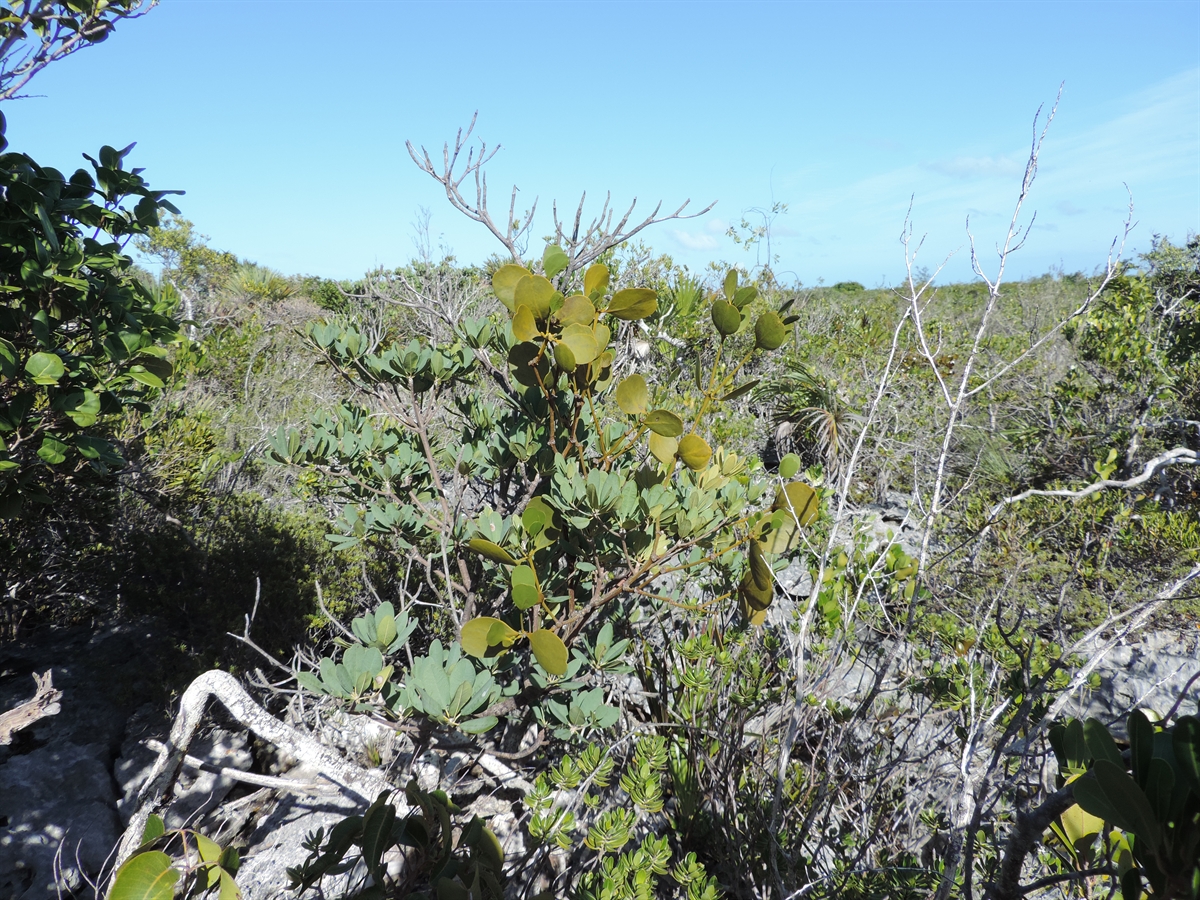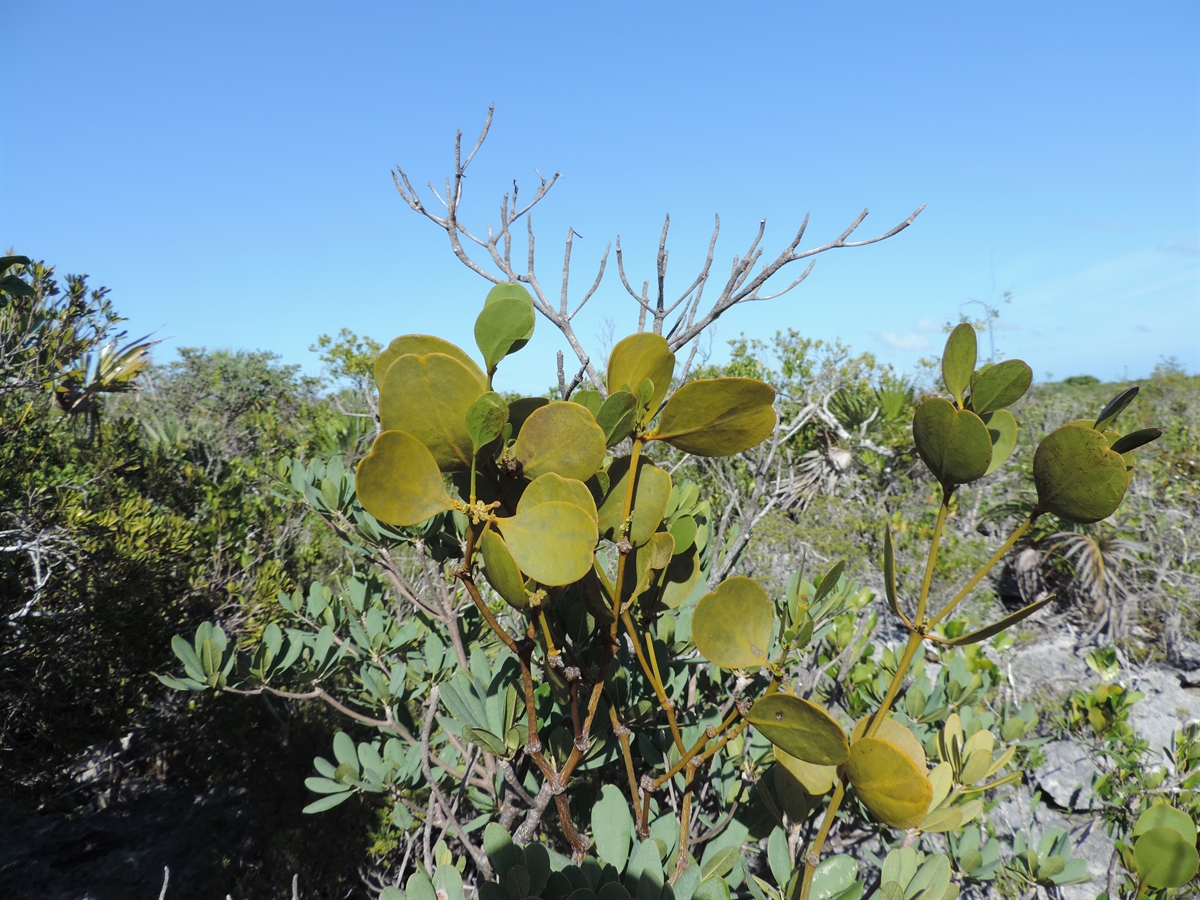Habit: Phoradendron northropiae grows as a parasite on other trees and shrubs with round stems. The leaves are arranged oppositely, to 9 cm in length, ovate to elliptic with a round and emarginate leaf apex.
Phoradendron northropiae is monoecious. The highly reduced, incomplete, imperfect, actinomorphic flowers are arranged in spikes. In staminate flowers there are 3 tepals, 3 stamens and no carpel. In carpellate flowers there are 3 tepals, no stamens, and 1 inferior ovary and 1 ovule. The fruit is a white to red drupe at maturity.
Habitat: Phoradendron northropiae grows on Swietenia mahagoni, Manilkara bahamensis, and Brysonima.
Distribution: Phoradendron northropiae occurs on Andros as well as parts of South America.
Medicinal/Cultural/Economic usage: Phoradendron northropiae is not known to be used medicinally in the Lucayan Archipelago but other species have been used to treat pain and fish poisonings and to cause miscarriages.

